Martin Edwards's Blog, page 44
April 12, 2023
Remploy - The Deerstalker Series and Melvyn Barnes
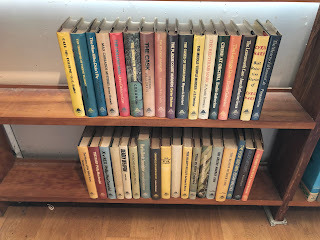
Myrecent post about the Hodder crime reprints of the 1960s prompted Melvyn Barnesto get in touch with info about a subsequent library imprint. As a result, I’mpleased to include a guest post from him – and if you’re a collector, you mayhave a unique opportunity here as well:
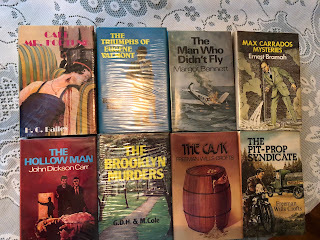 ‘Iwas involved with the Deerstalker Series from 1977 to 1982. They werepublished by Remploy, the public library bookbinders who also reprintedout-of-print fiction for libraries. The series consisted of thirty-fivevolumes of iconic crime fiction that I selected from my first book about thegenre, Best Detective Fiction (1975), and what makes them unique is thatthey are facsimile reprints of early (often the first) editions.
‘Iwas involved with the Deerstalker Series from 1977 to 1982. They werepublished by Remploy, the public library bookbinders who also reprintedout-of-print fiction for libraries. The series consisted of thirty-fivevolumes of iconic crime fiction that I selected from my first book about thegenre, Best Detective Fiction (1975), and what makes them unique is thatthey are facsimile reprints of early (often the first) editions.
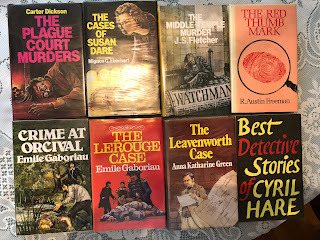
Istill have my set of thirty-five, all hardbacks and immaculate in dust jacketsprotected by plastic sleeves. As they were produced for libraries ratherthan bookshops, not surprisingly they have become extremely scarce over thepast forty years.
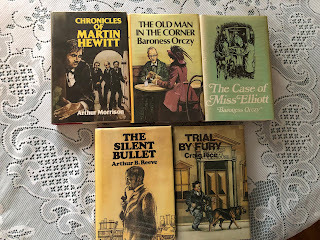
I am gradually selling the vastcollection of crime fiction that I have built up since my teenage years. It really hurts, but as they say you can’t takeit/them with you! So I’m now reluctantly offering my whole set of Deerstalkerfor sale, having preserved each volume since publication day, in one completelot. Most of them areextremely scarce, because they had a limited print run, were not sold inbookshops, and the public library copies became worn out and discarded.
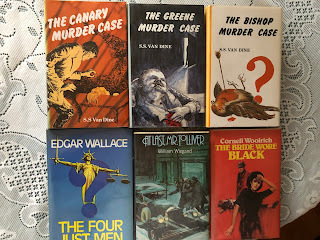
Theseries consists of –
BAILEY,H.C. Call Mr. Fortune. Remploy, 1979. Orig pubd 1919, thefirst Reginald Fortune collection.
BARR,Robert. The Triumphs of Eugène Valmont. Remploy, 1978. Origpubd 1906.
BENNETT,Margot. The Man Who Didn’t Fly. Remploy, 1977. Orig pubd1955.
BRAMAH,Ernest. Max Carrados Mysteries. Remploy, 1978. Orig pubd1927, the third Max Carrados collection.
CARR,John Dickson. The Hollow Man. Remploy, 1977. Orig pubd 1935.
COLE,G.D.H. The Brooklyn Murders. Remploy, 1978. Orig pubd 1923,introducing Supt Henry Wilson.
CROFTS,Freeman Wills. The Cask. Remploy, 1977. Orig pubd 1920, hisfirst novel.
CROFTS,Freeman Wills. The Pit-Prop Syndicate. Remploy, 1979. Origpubd 1922, his third novel.
DICKSON,Carter. The Plague Court Murders. Remploy, 1979. Orig pubd1934, the first Sir Henry Merrivale mystery.
EBERHART,Mignon G. The Cases of Susan Dare. Remploy, 1979. Orig pubd1934.
FLETCHER,J.S. The Middle Temple Murder. Remploy, 1978. Orig pubd 1919.
FREEMAN,R. Austin. The Red Thumb Mark. Remploy, 1979. Orig pubd 1907,his first novel, introducing Dr. John Thorndyke.
GABORIAU,Emile. Crime at Orcival. Remploy, 1977. Orig pubd in English1871 as The Mystery of Orcival, featuring Monsieur Lecoq.
GABORIAU,Emile. The Lerouge Case. Remploy, 1977. Orig pubd in English1873 as The Widow Lerouge, featuring Monsieur Lecoq.
GREEN,Anna Katharine. The Leavenworth Case. Remploy, 1979. Origpubd 1878, her first novel, introducing Ebenezer Gryce.
HARE,Cyril. Best Detective Stories of Cyril Hare. Remploy, 1978. Orig pubd 1959.
HUME,Fergus. The Mystery of a Hansom Cab. Remploy, 1980. Orig pubd1886, his first novel.
LEROUX,Gaston. The Mystery of the Yellow Room. Remploy, 1978. Origpubd in English 1908, his first novel, introducing Joseph Rouletabille.
MacDONALD,Philip. The Rasp. Remploy, 1977. Orig pubd 1924, his firstnovel, introducing Colonel Anthony Gethryn.
MacDONALD,Philip. X v. Rex. Remploy, 1980. Orig pubd 1933 under thepseudonym Martin Porlock.
MASON,A.E.W. The House of the Arrow. Remploy, 1978. Orig pubd 1924,featuring Insp. Hanaud.
MILLER,Wade. Deadly Weapon. Remploy, 1980. Orig pubd 1946, the firstnovel by Bill Miller and Bob Wade under their Miller pseudonym, introducing Lt.Austin Clapp.
MITCHELL,Gladys. Tom Brown’s Body. Remploy, 1978. Orig pubd 1949,featuring Mrs. Bradley.
MORRISON,Arthur. Martin Hewitt, Investigator. Remploy, 1978. Illustrated by Sidney Paget. Orig pubd 1894, the first collection ofMartin Hewitt stories.
MORRISON,Arthur. Chronicles of Martin Hewitt. Remploy, 1978. Illustrated by D. Murray Smith. Orig pubd 1895, the second collection ofMartin Hewitt stories.
ORCZY,Baroness. The Case of Miss Elliott. Remploy, 1978. Orig pubd1905, the first collection of The Old Man in the Corner stories.
ORCZY,Baroness. The Old Man in the Corner. Remploy, 1977. Orig pubd1909, the second collection of The Old Man in the Corner stories.
REEVE,Arthur B. The Silent Bullet. Remploy, 1979. Orig pubd 1912,the first collection of stories featuring “Craig Kennedy, ScientificDetective”.
RICE,Craig. Trial by Fury. Remploy, 1977. Orig pubd 1941.
VANDINE, S.S. The Canary Murder Case. Remploy, 1982. Orig pubd1927, the second Philo Vance mystery.
VANDINE, S.S. The Greene Murder Case. Remploy, 1982. Orig pubd1928, the third Philo Vance mystery.
VANDINE, S.S. The Bishop Murder Case. Remploy, 1982. Orig pubd1929, the fourth Philo Vance mystery.
WALLACE,Edgar. The Four Just Men. Remploy, 1979. Orig pubd 1905, hisfirst crime novel.
WIEGAND,William. At Last, Mr. Tolliver. Remploy, 1980. Orig pubd1950, his only crime novel.
WOOLRICH,Cornell. The Bride Wore Black. Remploy, 1977. Orig pubd1940.’
I imagine that seriouscollectors will be attracted to this intriguing set. If you’d like more info, please contactMelvyn on 01449 673777 or (if the link works -not confident!) at melvyn.barnes@oldnewton.com
April 10, 2023
Cracks - 2009 film review
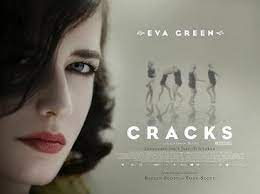
Cracks is a film set in a girls' boarding school in the 1930s. It's a psychological thriller which I'd never heard of before, but the fact that it starred Eva Green, Imogen Poots, Juno Temple, and Sinead Cusack - four high-calibre performers - suggested to me that it was well worth a watch. And so it was, despite various flaws. The director is Jordan Scott, director of Ridley Scott, and she does a good job. In visual terms, it's a very appealing film.
Green plays Miss G, a charismatic young teacher who is adored by a group of her pupils. She's unconventional, with an apparently exotic past, and she is particularly close to Di, played by Temple, whose performance I feel is the best in the film. The status quo is disturbed when an attractive but enigmatic young Spanish aristocrat (played by Maria Valverde) arrives at at the school.
The other girls take a dislike to the newcomer, but Miss G is charmed by her. Inevitably, Di becomes jealous. Our impression that Miss G is not really the exciting charmer she seems to be is confirmed and before long, relationships within the group become febrile.
The main problem is that the pace is too slow, and that the script isn't as tight as it might have been. One has only to think of that brilliantly sinister school film Unman, Wittering and Zigo to realise that the potential of the situation isn't as fully realised as it might have been. The ironic finale isn't bad, but I felt slightly frustrated that a movie that might have been really gripping didn't work as well as I'd hoped. One of Miss G's girls is called Fuzzy and the storyline of Cracks itself is also rather fuzzy.
April 7, 2023
Forgotten Book - Sweet Adelaide
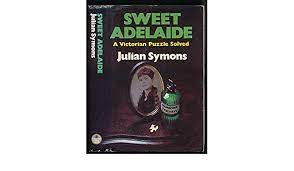
Sweet Adelaide, first published in 1980, was the second of Julian Symons' three Victorian mysteries. He'd deserted the contemporary scene to write The Blackheath Poisonings, which most people agree is the most successful of the trio. The plot of that book drew on elements of a famous real life crime. With Sweet Adelaide, Symons went much further. The eponymous Adelaide is Adelaide Bartlett, who was tried for the murder of her husband in 1886. Symons invents quite a lot of material, but most of the essentials are factual.
In an interesting afterword, he describes this as an 'experimental' novel, trying to cast light on a real life case by filling in the gaps - in this case, most particularly, the precise means by which Edwin Bartlett died. I realise with hindsight that when I wrote Dancing for the Hangman, I was doing something that is perhaps comparable, although in my novel, there was less invented material: I tried to be rigorous in sticking to the established facts, but also to use my imagination so as to try to see things from the point of view of Dr Crippen. For perfectly understandable reasons, Symons felt that he needed to bulk out his own story by introducing a range of elements of his own devising (for instance, an encounter with the Theosophist Madame Blavatsky). Some of these are definitely plausible, some less so.
When I first borrowed this book from a library, shortly after publication, I was very taken with it, partly because I wasn't familiar with the trial and I found his explanation of events interesting. As I've , it's a story that casts light not only on the case itself, but on Victorian life.
On reading the story again, I focused on trying to understand the techniques Symons employed in bringing the story to life. One of his key methods is to juggle timeframes. So we begin with the death of Edwin; then there is a long flashback about Adelaide's early life prior to her marriage. Another method is to juggle point of view. So we have some extracts from Adelaide's journal, but also scenes presented from the perspective of other people in the story, plus third person narrative, mostly but not entirely seen from Adelaide's point of view.
I suspect that he used these methods to introduce variety and interest and also to help build suspense. After all, anyone who knows the case knows what happens at the trial (though Symons also adds an interesting coda, set in the US many years after the trial). My guess is that he was worried that the story might become a bit mundane if told in an entirely straightforward way. He does his best to solve that problem.
It's clear that he did a huge amount of research into the case, and on my latest reading of the book, I found myself reflecting that perhaps he packed too much of it into the storyline, resulting in a slackening of tension. His prime concern was to explore Adelaide's psychology and I think this is done fairly well. However, there is quite a lot of medical/technical detail relating to Edwin's health and what precisely happened to him, and although that was crucial to the trial and its outcome, I felt that it slowed down the second half of the book. An interesting novel, certainly, but - for me - not a complete success on a second reading.
April 5, 2023
The Missing Page - No Peace for the Wicked and other short stories
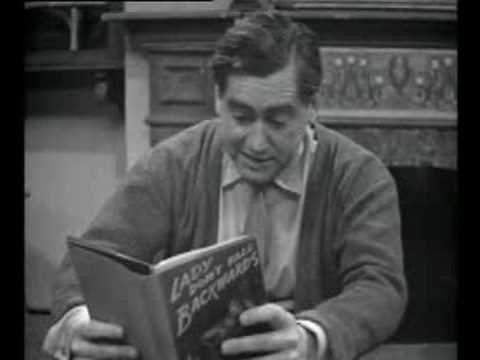
There's a wonderful episode of Hancock's Half Hour, 'The Missing Page', in which Tony Hancock (of whom I was a great fan) is tormented by the fact that the last page of a crime novel called Lady Don't Fall Backwards is missing from his library copy. It's such a famous show that someone even wrote a novel in tribute called... Lady Don't Fall Backwards. Now I've had my own Tony Hancock moment.
When I'm sent published copies of my stories, it's unusual for me to read my own efforts again, partly through lack of time but mainly because I find myself wondering how I could have improved them. So when my story 'No Peace for the Wicked' - one I very much enjoyed writing, by the way - appeared in Ellery Queen's Mystery Magazine, it took me a while to look at the contents. I started reading the stories and then flicked past my story - only to realise that it ended in a strange place. Further checking revealed, to my horror, that the final part of the story had been omitted! It still kind of made sense, just about, but it was far from what it should have been. To cut a long story short, it turned out that there had been a printer's error and nobody picked it up. The editor, Janet Hutchings, has been a friend for a long time so it wasn't a question of recriminations but simply of how to deal with the situation. And the answer is that the story can now be read online here. So all's well that ends well!
I'm not sure I shall now ever dare to look at any of my published stories ever again, in case lightning does strike twice. However, I wanted to mention three anthologies in which my work has appeared in recent times. The first is a Cornell Woolrich tribute anthology, Black is the Night, edited by Maxim Jakubowski. My story is called 'The Woman Who Never Was'. The idea came to me while relaxing in front of the television one evening and it's a story I really enjoyed writing.
Then there is 'Darling Lorraine', which appeared in Paranoia Blues: Crime Fiction Inspired by the Songs of Paul Simon, edited by Josh Pachter. This story had a very different inspiration - a visit to the lovely converted watermill that is the home of one of my writing friends.
Finally there is 'The Outsider', in Edgar & Shamus Go Golden, edited by Gay Toltl Kinman and Andrew McAleer. The stories all pay tribute to the Golden Age and the inspiration for my story came from thinking about an Agatha Christie novel - the setting rather than the plot in this case. I liked the detective duo that I created for this story and one day they may return, as I really enjoyed writing about them
April 3, 2023
Hodder's Classics of Detection and Adventure series and its successors
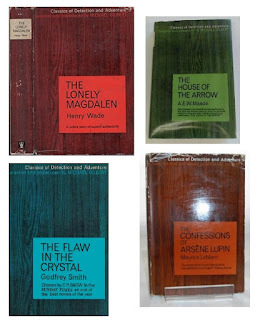
The British Library's Crime Classics are, I imagine, by far the bestselling series of 'crime classic' novels and short story anthologies of all time, certainly in the UK and probably elsewhere, with total sales well into seven figures. The series almost certainly boasts the most titles - well over one hundred, and counting. But there have, of course, been plenty of 'classic crime' reprint series over the years. The one that made the greatest impression and had the greatest influence on me was Hodder's series of Classics of Detection and Adventure, with introductions by the great Michael Gilbert. I've been reminded of it by James Dring, one of the many people who have in recent years kindly got in touch with me with questions or information about crime fiction (and who supplied the above image).
When in my youth I was haunting my local library in Northwich in the late 60s and 70s, the appearance of this series (which was, I presume, aimed squarely at the library market) was a source of great pleasure. It introduced me to some wonderful writers and some very good books. The ones that I can remember reading are: Heads You Lose by Christianna Brand, Trial and Error by Anthony Berkeley, The White Crow by Philip Macdonald, Verdict of Twelve by Raymond Postgate, The House of the Arrow by A.E.W. Mason, and The Confessions of Arsene Lupin by Maurice Leblanc. It was my first encounter with each of those authors. Quite an education!
I always read and enjoyed Gilbert's introductions. They were informative, written in his characteristically agreeable style, and concise. I learned a lot from him. An excellent model and I have kept his approach in mind ever since I started writing intros myself in the 1990s, for the Black Dagger reprint series.
To my regret, the Hodder series didn't last long - I don't know why, perhaps something to do with sales or maybe Gilbert lost interest or used up all his favourites. Nowadays, copies of these books are surprisingly hard to find. There was another reprint series at that time or a little later - the Constable 'Fingerprint' books, which included some good titles but lacked intros. My library didn't stock many of them and that series also bit the dust fairly soon.
Here's a list James has kindly sent me of what we believe to be the full set of Hodder Classics:
The Mask of Dimitrios by Eric Ambler (first published in 1939;republished by Hodder in 1965)
The House of the Arrow by A. E. W. Mason(1924/1965)
Trial and Error by Anthony Berkeley(1937/1965)
The Lonely Magdalen by Henry Wade (1940/1965)
The Flaw in the Crystal by Godfrey Smith(1954/1965)
The White Crow by Philip MacDonald(1926/1966)
The Little Walls by Winston Graham(1955/1966)
Heads You Lose by Christianna Brand(1941/1966)
Venetian Bird by Victor Canning(1950/1968)
The Northing Tramp by Edgar Wallace (1926/1968)
Verdict of Twelve by Raymond Postgate(1940/1969)
The Murder on the Links by Agatha Christie(1923/1969)
The Confessions of Arsène Lupin by Maurice Leblanc(translated by Joachim Neugroschel; 1913/1969)
Later, Penguin flirted with a few 'crime classics', while Collins' short reprint series in 1980, with intros by Julian Symons, was a hit and prompted subsequent series masterminded by Harry Keating. The Black Dagger series - again aimed at libraries - was a great venture, with intros by many CWA members, but eventually the imprint changed hands and the intros were dispensed with to cut costs - shame!
The reality is that reprinting old crime novels has never been a passport to publishing riches, even if you can make some easy money by turning out-of-copyright books into ebooks. The British Library's amazing success is really an exception that proves the rule. And whatever the merits of my own contributions, which aim to give the series a distinctive personality, there's no doubt that the cover designs play a crucial part in that success. This is because they play a big part in booksellers' decisions about stocking the books. The series is a publishing phenomenon and my association with it is a continuing source of pleasure. And in case you're wondering, yes, there are plenty more good books to come....
March 31, 2023
Forgotten Book - The Dumas Club
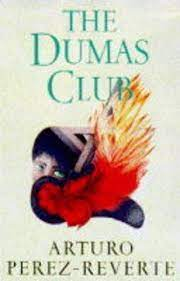
Arturo Perez-Reverte is an interesting and erudite novelist. A couple of years ago, I reviewed on this blog and recently I came across a book of his first published almost thirty years back, The Dumas Club. This is a novel about a book hunter, and ever since I was commissioned to write the story that became The Traitor, I've been particularly interested in books on that theme.
The book hunter in question is Lucas Corso, and like all good bibliophiles there is a touch of the obsessive about him. He becomes interested in a manuscript by Alexandre Dumas after the death of the man who recently sold it, whose name was Taillefer. The snag is that Taillefer's glamorous widow Liana is desperate to get it back. Corso consults an expert called Boris Balkan, who plays what I can only describe as a curious role in the story.
The plot thickens as we're given various illustrations, some of which contains clues, and are treated to a good deal of arcane book lore. The name of Roger Ackroyd is invoked, while Corso encounters a gorgeous woman (another one!) who calls herself Irene Adler. So, references to classic detection abound. Naturally this adds to the appeal so far as I'm concerned. However, I'm not sure that Perez-Reverte really justifies these connections in terms of the story. They are more like window-dressing.
This is a long novel, undoubtedly clever, but for me it didn't have the same brisk tempo of The Flanders Panel and I found it less appealing. Roman Polanski based his film The Ninth Gate, which I haven't seen, on the story, though I gather that his version makes many changes to the source material. I admire Perez-Reverte's ambition as a writer, but although this book has plenty of good ingredients, I wasn't bowled over by what he made of them.
March 29, 2023
Endeavour and Goodbye to Inspector Morse

I vividly remember watching the first episode of Inspector Morse starring John Thaw as the great Oxford detective and discussing it with a colleague at work the following day. That was The Dead of Jericho, aired in 1987. I really enjoyed it but I never dreamed that the Morse series would keep going, in one guise or another, until 2023.
Yet that is what happened. Inspector Morse ran until 2000 and although John Thaw died, Lewis, starring Kevin Whately and Laurence Fox, became a huge hit - contrary, I must admit, to my initial expectations. The strength of the writing, the quality of the characters, the acting, the music, and the production values, coupled with the wonderful Oxford locations, all combined to great effect.
I also had initial doubts about Endeavour, a prequel series starring Shaun Evans as the young Morse and Roger Allam as Inspector Thursday, who doesn't get a mention in the books. Again, the combination of Russell Lewis's skilful screenplays plus all the familiar ingredients and strong period settings made the pilot episode in 2012 a hit. And now it's finally come to an end, in a very enjoyable concluding episode which ties up most if not perhaps all of the loose ends.
These shows have given me a great deal of pleasure over the last 36 years. Colin Dexter was, of course, thrilled by their enormous success. I have a distinct memory of seeing his first novel for sale in an Oxford bookshop - 'By Local Author' - and nobody paying attention to it, when I was a student. Later, it was a joy to get to know Colin a bit. He wrote a story for one of my anthologies and the last time we met, when he was very frail, he was kind enough to inscribe a copy of a Lewis script for me. Colin loved Oxford, as I do, and the TV series certainly did him and the city of dreaming spires proud.
March 27, 2023
The Crime Classics and the Cultural Enterprise award
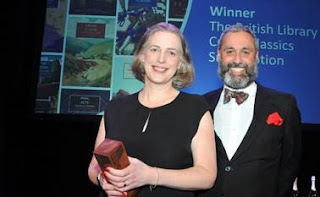
Rebecca Nuotio (pictured, receiving the award) is in overall charge of the small dedicated publications team at the Library. I've enjoyed working with her and her colleagues over the years and it's good to see that they are reaping the rewards of their commitment to classic crime.
Here is Rebecca explaining what the new service is about: 'We launched our British Library Crime Classics subscription service in September 2022, offering customers a monthly rolling or 12-month subscription to receive the latest titles in the popular series. Our initial aim when creating this product for the Crime Classics series was to increase revenue, to retain our current customers (during the pandemic and now the cost-of-living crisis) and to expand our audience. We have subsequently added a six-month subscription, following feedback from customers, which makes an ideal gift.
'We felt it important that as the home of the series we were able to offer something other retailers were unable to offer. Whilst most subscribers would benefit from a monetary incentive to purchase from us (free UK postage or a discount on annual subscriptions), we have also been adding related ephemera to each order.
'For example, subscribers received a booklet reprinting of images found in the original 1934 edition of W F Harvey’s The Mysterious Mr Badman with their delivery of that title. We have also included specially produced greeting cards, bookmarks, and postcards - things we can produce in-house or with our regular suppliers for a low cost, but that add value to the series’ fan base. We also include a welcome message in each new subscription from series editor Martin Edwards, and we are planning what other items we can include in the future.’
At a recent meeting at the Library, I was heartened by the strength of the commitment to the series. We have many more titles lined up, some as 'definites', many more as 'possibles' and once I've finished work on the forthcoming anthology of Welsh mysteries, there will be a couple more anthologies to research and prepare. Almost every day I receive emails from fans of the series, expressing their delight in the books and often either asking questions or making suggestions. It's good to know that, nine years after the first appearance of John Bude's The Cornish Coast Murder, which really kick-started the series' growth, readers and bookshops remain as enthusiastic about it as ever.
So which authors have been the biggest beneficiaries of this renaissance? In the early days, there's no doubt that John Bude was the front-runner. More recently, my understanding is that sales have been spread around, with Anthony Berkeley, Christianna Brand and John Dickson Carr enjoying great popularity as well as a number of individual titles, such as Michael Gilbert's Smallbone Deceased. Overall, though, I think there's little doubt that of all the many authors whose reputations have benefited from republication, E.C.R. Lorac leads the way. It's also clear that different titles of hers appeal to different readers. And the good news is that I'm sure there are more to come.
March 24, 2023
Forgotten Book - Fear for Miss Betony
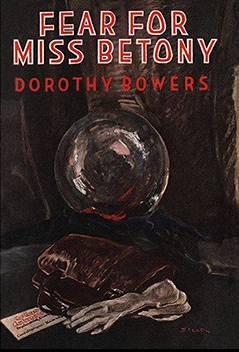
Fifteen years have passed since I discussed Dorothy Bowers' 1941 novel on this blog, although I'd read the American reprint issued by the late, lamented Rue Morgue Press and so I referred to the novel by its slightly different American title, Fear and Miss Betony. It's a well-written novel and I decided to take another look at it, this time from the writer's perspective as much as the reader's.
One thing that has changed in the intervening years is that I've acquired a lovely inscribed copy of this book. In inscribing the book to someone called R.H. Naylor, Bowers quotes from 'All's Well that Ends Well': 'We, the poorer born, whose baser stars do shut us up in wishes'. Every time I think of Bowers, my admiration is mixed with the poignant reflection that she could have achieved so much had her life not been so cruelly cut short by TB.
As for the story, I've come to the conclusion that - for all its merits - the structure is lop-sided. The story is very, very different from A Shilling for Candles by Josephine Tey, another very well-written book that doesn't work as well as it should have done, but there are one or two resemblances. I suspect that Bowers enjoyed writing about Emma Betony so much that she focused too much on the story's very slow build-up. As a result, various revelations come in a rush at the end, when her usual detectives, Pardoe and Salt, make a belated appearance.
As with the Tey novel, I think she could have made more of the basic situation. Agatha Christie was not as accomplished a prose stylist as either Tey or Bowers, but she would have dealt with the mystery element of the book carefully and effectively, of that I'm pretty sure. But it's worth emphasising that there are many compensations, including the period detail and an insight into the attitudes of the time, especially towards older people. At the start of the story, Emma Betony is sixty-one years old and everyone treats her as though she has nine toes in the grave. Shame! Anyway, she proves to be a lively and intelligent woman and I enjoyed sharing her company once again.
March 22, 2023
Love Me Fierce in Danger by Steven Powell - review

James Ellroy is an extraordinary writer and also a remarkable individual. I met him once, briefly, at an event and had a chat with him as he inscribed some books to me. He likes to present himself as 'The Demon Dog of Crime' and it's not always easy to separate the publicity-generating headlines about him, and his sometimes outrageous behaviour, and the real man. I have mixed feelings about his work - some of it I really like, some of it leaves me cold. But, as anyone who has read The Life of Crime will know, I do think he is a significant and interesting figure in the development of modern American crime fiction.
Love Me Fierce in Danger: The Life of James Ellroy is the first biography of him, and I'm sure it won't be the last. Ellroy is, at 74, still writing and has a novel due out soon. There's a lot to unpick in his life story, including of course the consequences of the terrible murder of Ellroy's mother on her son when he was just ten years old. Ellroy has written extensively on this subject himself, and any psychologist would have a field day exploring his complex thought processes.
Steven Powell is one of a number of British academics - Mike Wilson, Jamie Bernthal, and Mark Aldridge are among the others - who are doing good work in writing about crime fiction without an excess of academic jargon. Powell is a specialist in Ellroy and his sympathy for the man is, I would argue, a strength of the book. Importantly, he writes in a clear and accessible way.
Powell highlights, among much else, the influence that the distinguished American editor Otto Penzler had on Ellroy's career. All writers benefit greatly from an editor who believes in their work and Otto definitely has an eye for talent. Inevitably there are a few points one might quibble with. For instance, is it really credible that the CWA gave Ellroy a 'briefing' asking him not to cause offence at the 1995 Bouchercon (which I attended), given that the CWA didn't organise the convention and would have had no standing in the matter? The CWA Chair in those days was the ex-cop Peter Walker and it hardly sounds like his doing.
Overall, though, there is much to relish here, not least the quote from Joyce Carol Oates that Ellroy is 'the American Dostoyevsky'. As Steven Powell points out, for all the troubled nature of aspects of Ellroy's life, it also has an inspiring quality in a number of respects. This book makes a worthwhile and welcome contribution to Ellroy scholarship.



